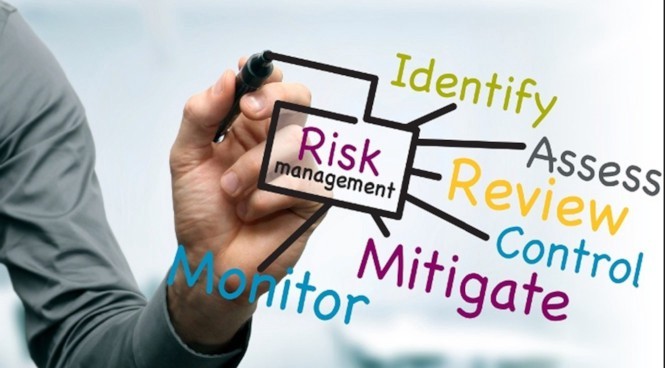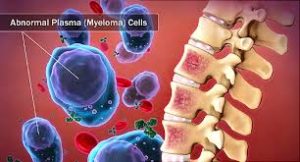
Diagnosed with SMM, SPB, or MGUS?
Learn how you can stall the development of full-blown Multiple Myeloma with evidence-based nutritional and supplementation therapies.
Click the orange button to the right to learn more.
- You are here:
- Home »
- Blog »
- Pre-Myeloma »
- Chemo for High Risk Smoldering Myeloma- Pain…
Chemo for High Risk Smoldering Myeloma- Pain…

“…among the lenalidomide-treated patients, grade 3 or 4 hematologic and nonhematologic adverse events occurred in 36 patients (41%), with nonhematologic adverse events occurring in 25 patients (28%).”
Yes, Lenalidomide slows a possible MM diagnosis for the high-risk SMM patient. It is important to note, evidence-based, non-toxic therapies shown to cause MM apoptosis (kill) are also available.
These non-toxic therapies can kill MM while not causing short, long-term and late stage side effects.
I’ve excerpted the study to call out specific issues that I would want to know if I had just been diagnosed with pre-myeloma.
“we hypothesized that early intervention with lenalidomide could delay progression to symptomatic multiple myeloma…”
If you had just been diagnosed with SMM, it would be logical for you to read this sentence and think that “delaying progression” of SMM would be a good thing. Yes, revlimid can delay MM but it will also cause a slew of side effects reducing your quality of life.
“although patients with certain adverse prognostic factors may have a higher risk of progression of approximately 25% per year.4–6…”
The oncologists writing up the study results should also point out that certain prognostic factors may REDUCE the risk of progression to MM as well and therefore REDUCE the percentage of risk to full MM.
“In the randomized trial, among the lenalidomide-treated patients, grade 3 or 4 hematologic and nonhematologic adverse events occurred in 36 patients (41%), with nonhematologic adverse events occurring in 25 patients (28%). Among the phase III patients who were off treatment (n = 45), 40% (n = 18) came off therapy as a result of adverse events…”
We don’t know if there is any overlap between the hematologic and nonhematologic patients but I think it’s safe to say that the majority of patients experience serious (grade 3 or 4) adverse events. I have to wonder if the entire group experienced grade 1 or 2 adverse events as well.
The take away is that conventional oncology wants to treat and therefore must treat with FDA approved therapies. There are evidence-based but NON-toxic, non-conventional therapies shown to reduce the risk of SMM from becoming MM.
To Learn More About Smoldering Multiple Myeloma- click now
Scroll down the page, post a question or comment if you’d like to learn more about the evidence-based, non-toxic, non-conventional therapies shown to reduce your risk of MM.
Thanks,
David Emerson
- MM Survivor
- MM Cancer Coach
- Director PeopleBeatingCancer
Recommended Reading:
- Risk of Progression for Smoldering Multiple Myeloma is Reduced…at what cost?
- Multiple Myeloma Chemotherapy- Longer PFS w/ Inc. Side Effects w/ Inc. Kyprolis Dose?
- Integrative Myeloma Therapies- Eliminate Chemo-induced Heart Damage
Randomized Trial of Lenalidomide Versus Observation in Smoldering Multiple Myeloma
“PURPOSE- Observation is the current standard of care for smoldering multiple myeloma. We hypothesized that early intervention with lenalidomide could delay progression to symptomatic multiple myeloma.
Smoldering multiple myeloma (SMM) is an asymptomatic precursor stage of multiple myeloma (MM).1,2 It is associated with a risk of progression to symptomatic MM of 10% per year,3 although patients with certain adverse prognostic factors may have a higher risk of progression of approximately 25% per year.4–6…
Going off treatment was primarily a result of patient withdrawal or adverse events. Among the 69% of phase III patients on treatment by cycle 12, relative dose intensity was 55% with 80% of treated patients on a reduced dose…
In the randomized trial, among the lenalidomide-treated patients, grade 3 or 4 hematologic and nonhematologic adverse events occurred in 36 patients (41%), with nonhematologic adverse events occurring in 25 patients (28%). Among the phase III patients who were off treatment (n = 45), 40% (n = 18) came off therapy as a result of adverse events. Patients off treatment as a result of adverse events did not seem to have shortened PFS follow-up as evidenced by PFS follow-up extending well beyond the duration of delivered therapy…
The cumulative incidence of invasive second primary cancers at 4 years was 4.9% in the phase II run in. In the randomized trial, the 3-year CI of invasive second primary cancers was 5.2% in the lenalidomide arm and 3.5% in the observation arm (Appendix Table A7, online only)…
RESULTS- One hundred eighty-two patients were randomly assigned—92 patients to the lenalidomide arm and 90 to the observation arm. Median follow-up is 35 months. Response to therapy was observed in 50% (95% CI, 39% to 61%) of patients in the lenalidomide arm, with no responses in the observation arm. Progression-free survival was significantly longer with lenalidomide compared with observation
One-, 2-, and 3-year progression-free survival was 98%, 93%, and 91% for the lenalidomide arm versus 89%, 76%, and 66% for the observation arm, respectively. Only six deaths have been reported, two in the lenalidomide arm versus four in the observation arm (hazard ratio for death, 0.46; 95% CI, 0.08 to 2.53). Grade 3 or 4 nonhematologic adverse events occurred in 25 patients (28%) on lenalidomide.


